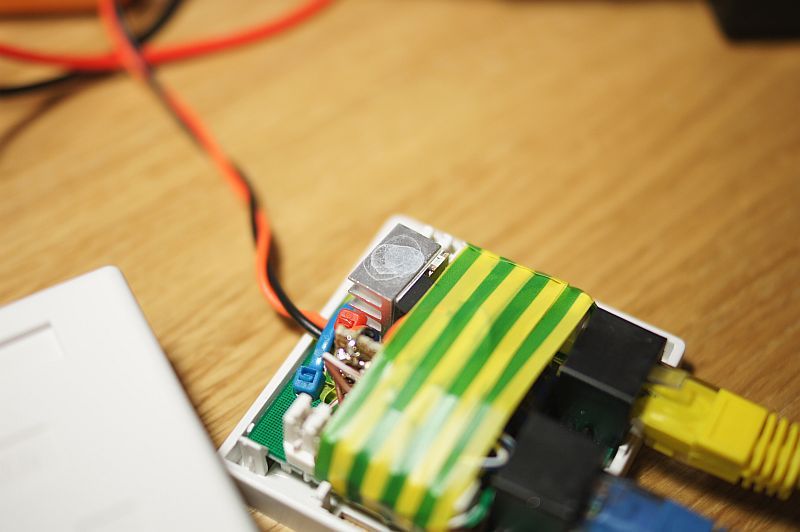It didn't actually fail, it works, sort-of. I won't say what went wrong, yet, because I'm going to make a game out of it, guess right and get a gold e-sticker. HINT: You can see it (or lack thereof) in the pics below.
Anyway, here's the write up.
My goal was to place my IP camera somewhere far from a power socket but within reach of a network cable. The obvious solution is PoE (Power Over Ethernet), my attempt at PoE involves sending DC power though an active network CAT5 cable by using the two unused pairs when running at 100/10, note this approach isn't 'proper' PoE, .i.e. isn't standard IEEE 802.3.
This would be trivial if the camera ran at 12V or greater, all I'd have to do is make a simple splitter. But the camera I have runs at 5V which on a decent length of network cable will result in significant losses from the higher current when running at low voltages. The solution here was to send a higher voltage though the cable and step it down to 5V at the IP camera end.
Another goal was to do this using only the parts I had lying around, this included;
19V Laptop charger
2x Double RJ-45 wall sockets
LT3083 Power regulator
Various other components, resistors, caps, proto board etc.
The idea was to send 19V down the ethernet cable and step it down to 5V using the regulator, all housed in compact RJ-45 wall sockets.
So I cobbled this together;
Power regulator circuit testing
The two RJ-45 sockets
Regulator circuit stuck together on PCB and crammed in to one of the sockets, this is the device (e.g. IP Cam) end of the PoE system.
Another view.
This is the 'injector' end of the PoE system. A similar system without the power regulator would resemble this on both ends. The red cable running out is an inline DC jack socket where the power adapter is connected.
Everything hooked up and working. The black box is my multimeter ammeter adapter, I built it to make current measuring easier. The DMMs left and right are measuring voltage and current respectively.
HINT 2: Again, it works but with one major issue preventing me using it with high load appliances with potential for injury if the case housing the regulator is open.
EDIT: Yes the datasheet in the background is for a LT1185 rather than the LT3083, but that's not what went wrong





 LinkBack URL
LinkBack URL About LinkBacks
About LinkBacks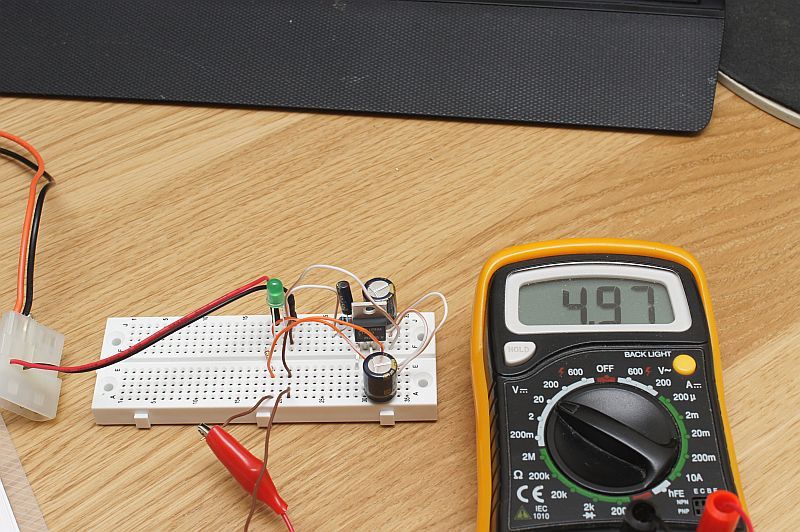
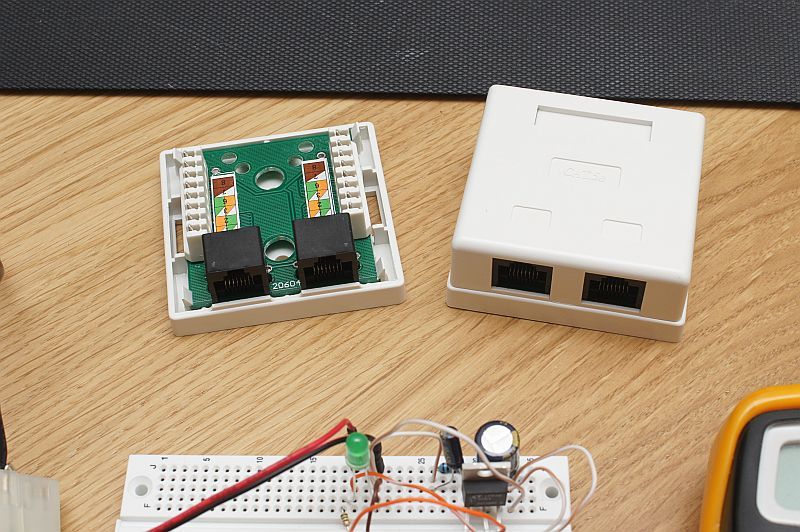
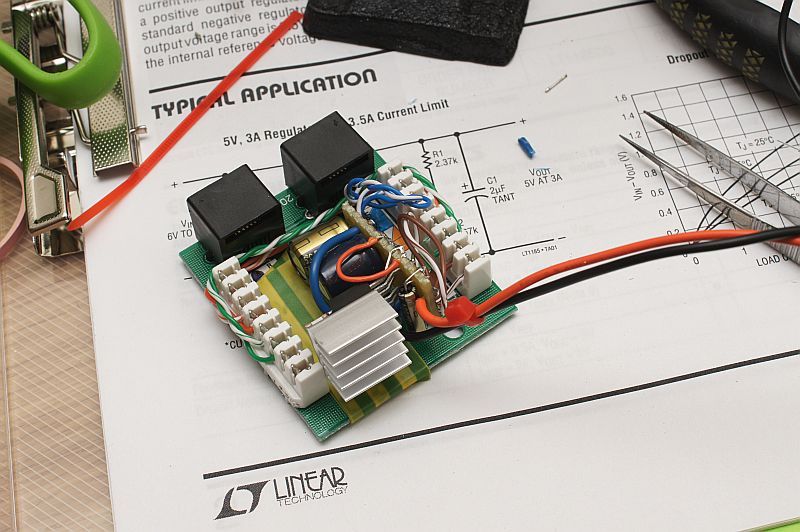
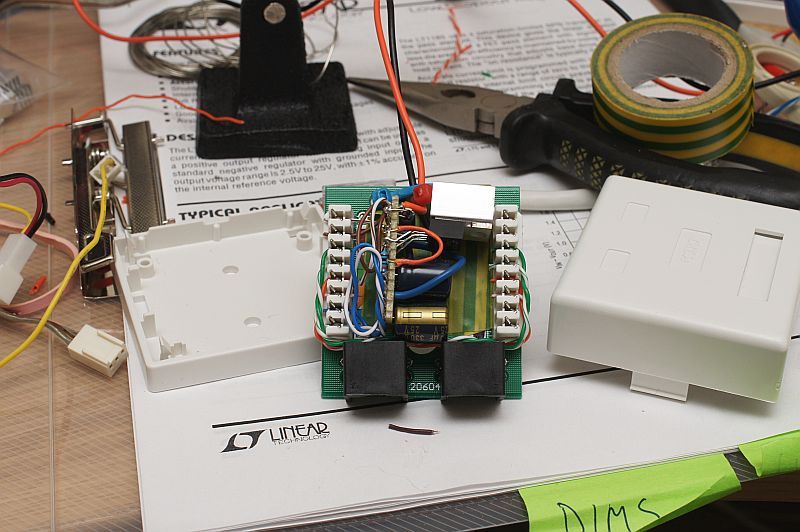
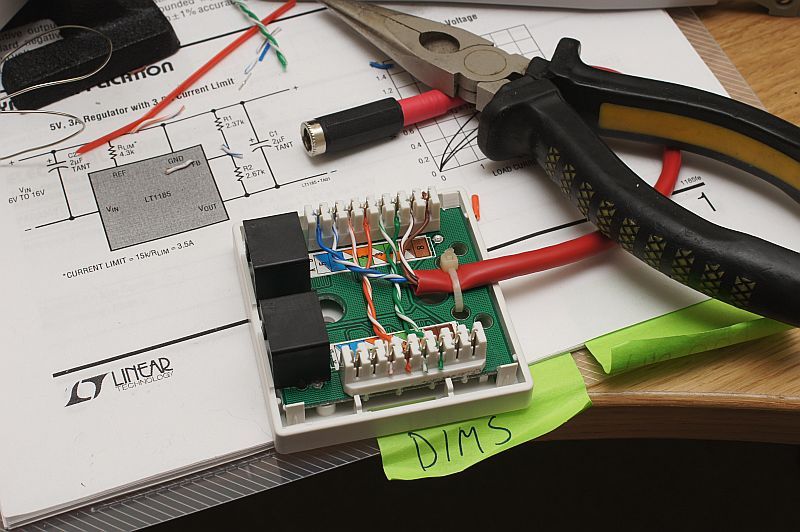
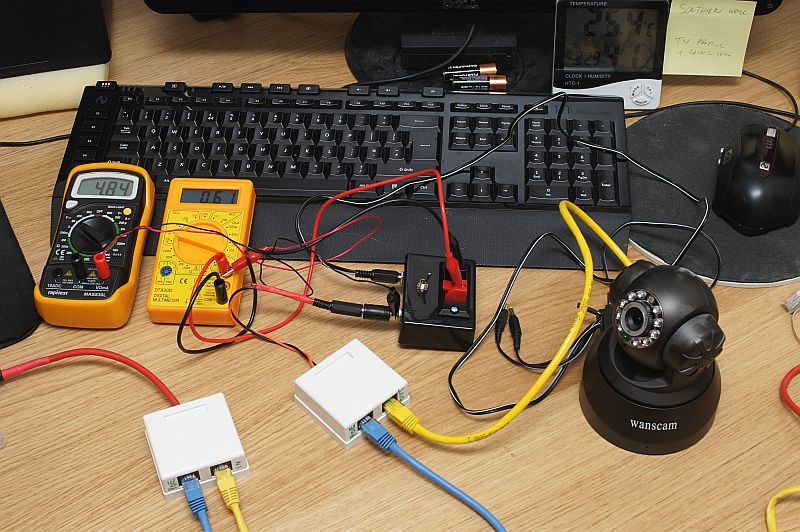

 Reply With Quote
Reply With Quote



